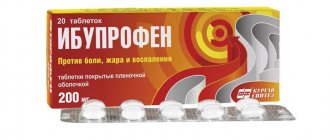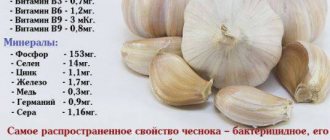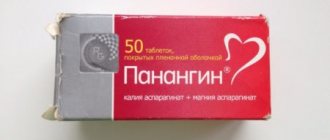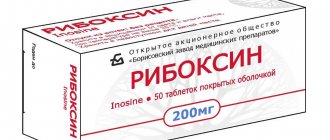Mexidol is a domestically produced drug that is indicated for the treatment of neurological and psychiatric diseases, in the treatment of drug addiction or for rehabilitation after surgery. The drug has a positive effect on memory and thinking. After taking the medicine, there is an increase in the production of dopamine in the body, which helps fight depression. Patients often wonder whether it is permissible to use the drug during blood pressure surges, and how it affects indicators - increases or decreases blood pressure.
"Mexidol"
Indications for use
The drug is sold in pharmacies only with a doctor's prescription. Its direction depends directly on the form of release.
Mexidol injections are used in the following cases:
- high blood pressure caused by impaired blood flow in the brain area;
- the process of inflammation, accompanied by the release of pus;
- skull injury with brain damage;
- taking an anti-psychopathy drug that caused intoxication of the body;
- alcohol addiction, accompanied by pseudo-neurotic disorders;
- VS-violations of a pronounced nature;
- insufficient blood supply to the brain, which slowly progresses;
- open-angle glaucoma;
- myocardial infarction in the acute stage.
Mexidol injections can be applied directly into the muscle, intravenously and by diffusion if necessary.
The tablet drug is prescribed in the following cases:
- skull injuries with minor brain damage;
- as a prophylaxis against high blood pressure;
- lack of oxygen in the brain, leading to impaired blood circulation;
- asthenic type syndrome;
- ischemic diseases;
- brain pathologies that are not inflammatory in nature;
- therapy for alcohol dependence, the drug is used comprehensively;
- causeless anxiety and pseudo-type neuroticism.
In addition to direct indications, Mexidol affects blood pressure during exacerbation of stress. The drug reduces blood pressure, the increase in which is caused by the patient’s emotional surge.
Indications for use and dosage form
Mexidol is designed for use in neurology, surgery and even psychiatry. It is used for:
- circulatory disorders, including cerebral ones;
- vegetative-vascular dystonia;
- disorders of brain function in atherosclerosis;
- withdrawal syndrome caused by alcoholism.
Mexidol for hypertension is used as part of complex therapy. In addition, this remedy is applicable in the treatment of peritonitis, acute forms of pancreatitis, as well as relieving the consequences of an overdose of antipsychotics.
In all these cases, Mexidol showed a fairly high effectiveness of use. The use of the drug for the treatment and prevention of asthenic conditions, cardiac ischemia, and cognitive disorders is also allowed and recommended. The use of Mexidol is also indicated for persistent exposure to stress-forming factors and excessive psychological or physical stress.
This list is not complete - the drug is recommended for use for the treatment of a fairly wide range of diseases and dysfunctions associated with insufficient blood supply to internal organs.
Mexidol injection solution
The industry produces this drug in two main forms - for oral use and for injection. Film-coated tablets weighing 125 mg are administered orally. For injections, capsules of a five percent solution of the active substance with a volume of two milliliters are produced. Pharmacology does not produce other dosage forms of this drug.
Is it possible to drink Mexidol with high blood pressure? It is possible and sometimes necessary, but only as prescribed by a doctor. The fact is that there is no clear answer to the question of whether Mexidol increases or decreases blood pressure. This mainly depends on the individual characteristics of the patient. Therefore, Mexidol with high blood pressure can bring both benefit and harm. T
Effect on blood pressure
It is possible to answer the question whether the medicine Mexidol lowers or increases blood pressure only depending on each specific case.
Don't tolerate high blood pressure
Now hypertension can be cured by restoring blood vessels...
>
The process of taking it for low blood pressure is strictly individual; the decision on the advisability of using it for hypotension is made by the doctor.
Mexidol stabilizes blood pressure if deviations from the norm in the tonometer readings are not critical. With the help of this drug, you can achieve stabilization of the condition of blood vessels, which in turn normalizes blood pressure.
For arterial hypertension, the medicine has the following effects:
- protection against ischemic pathologies;
- improvement of the metabolic process in the brain;
- strengthening the heart muscle and vascular system;
- protection of capillaries and arteries from oxygen starvation.
Despite the fact that Mexidol can lower blood pressure, it cannot be used exclusively for this purpose. Self-medication is also prohibited.
Video on the topic
Does the drug Mexidol lower blood pressure or not? What effect can be expected from taking it? Answers in the video:
In general, Mexidol is a modern drug characterized by a number of positive properties. First of all, it is worth noting its high medicinal effectiveness and wide application profile. In addition, this drug has no side effects and does not cause health problems even with long-term use.
Another undoubted advantage is the high variability of the effective combination of Mexidol with other somatic drugs. The active substances used do not cause addiction or allergic reactions, and the variety of forms of the drug and methods of its administration allow for effective treatment of various groups of patients.
The information on the MyMedNews.ru website is for reference and general information, collected from publicly available sources and cannot serve as a basis for making a decision on the use of medications in the course of treatment.
MyMedNews.ru
And we also have
Antihypertensive medicine Moxarel: instructions for use, price, reviews, analogues
Release form
Mexidol, which can increase and decrease blood pressure, is available in pharmacies in 2 versions:
- tablet form.
- liquid for administration in ampoules.
The injectable composition, which can be administered intramuscularly and intravenously, is available in ampoules of 2 ml and 5 ml. Packages of 5 and 10 ampoules are available, depending on the dosage prescribed by the doctor and the duration of therapy.
Mexidol tablets, the dosage of which is 125 mg of the main substance, are available in blisters in cardboard packages of 30, 50 and 100 pieces and in jars of 90 pieces.
Methods of use
For intramuscular or intravenous administration, injections and a dropper are used. The speed of the latter should not exceed 60 drops per minute. It is prepared by adding the substance to saline solution. The duration of the injection procedure is about 5 minutes.
The number of procedures and dosage is determined by the doctor in accordance with the identified diagnosis. The end of the procedures should be accompanied by a gradual reduction in the dose and subsequent examination, which will provide confidence that there is no need to continue treatment.
Mexidol solution is used by intramuscular or intravenous administration using injections or droppers
The same applies to taking tablet forms. The minimum period of such treatment is at least two weeks. An exception may be the removal of alcohol dependence, or more precisely, the consequences of stopping drinking alcohol. In this case, the medicine is used for a week.
An overdose can be caused by using the drug in too large a volume, for example, during self-medication or making an incorrect diagnosis. These effects can also occur when taking multiple types of medications. For example, if you simultaneously take medications from antidepressants or tranquilizers. The use of this medication will be an effective addition to the treatment of somatic diseases.
Source: https://www.eapteka.ru/goods/id242335/
Compound
The main active ingredient of Mexidol, which has a direct effect on blood pressure, is ethylmethylhydroxypyridine succinate. This component prevents the destruction of body cells oppressed by the action of free radicals.
Additional components of Mexidol:
- sodium carmellose;
- food coloring;
- polymer of artificial origin;
- macrogol;
- talc;
- food grade emulsifier E572;
- milk sugar.
The solution for injection additionally contains water for injection and sodium metabisulfite.
Mechanism of action
Using the drug you can:
- prevent the effect of free radicals on the body;
Today this medicine is widely used by general practitioners, neurologists, psychiatrists, narcologists and surgeons.
- reduce harm from lack of oxygen, which affects all systems and organs;
- strengthen the memory mechanism;
- increase learning ability;
- reduce blood pressure (BP);
- cure depression through the production of “joy hormones”;
- protect against intoxication at the cellular level;
- relieve the consequences of the syndrome that occurs when giving up alcoholic beverages;
- get rid of cramps.
Price
The average cost of the drug Mexidol ranges from 250 to 450 rubles, depending on the form of release of the drug.
The cost of cardboard packages of 30 tablets is 250-300 rubles, 50 tablets - 380-450 rubles, the price for 100 tablets starts from 500 rubles.
The cost of ampoules for intramuscular and intravenous administration depends on their quantity in the package. Thus, the cost for a package of 10 ampoules of 2 ml of medicine is 430-500 rubles.
All about increased intracranial pressure
Glycine for VSD is a medicine that can help many people with characteristic autonomic disorders.
Unfortunately, the effect of the pills will not be positive for everyone. Some people do not experience any significant improvement after using it. You should not rely completely on this tool. It is advisable to take it in combination with other drugs. Glycine is an amino acid used as a primary or additional medicine. Thanks to the presence of the active component of the same name, the processes of excitation and inhibition are corrected. The drug is designed for long-term use because its effect appears gradually.
Glycine, recommended for patients with VSD, has the following properties:
- Effectively eliminate nervous tension arising from various life problems.
- Control the functions of the autonomic system, reduce excitability and establish inhibition processes.
- Improve sleep.
- Normalize mental performance.
- Remove the condition caused by motor hyperactivity.
People with dystonia feel any weather changes very strongly. They have to deal with intense headaches, and there are abnormalities in the functioning of the cardiovascular and nervous systems. Often the headache is accompanied by discomfort in the heart area. Therefore, there is a need for therapy that can help improve the patient’s condition.
Some people after a medical facility may see a note on their card indicating increased intracranial pressure. This pathological condition may indicate quite different diseases and problems of the human body, which must be carefully dealt with.
Intracranial pressure is the pressure inside the human skull, which is regulated by a fairly large number of different processes. This concerns the production of cerebrospinal fluid, cerebral vascular tone, blood flow volume, homeostasis and many other physiological characteristics of the body.
It is believed that the normal intracranial pressure ranges from 7.5 to 15 millimeters of mercury, which is from 1 to 2 kPa.
In most cases, intracranial pressure measurement occurs indirectly. This is due to the fact that any intervention in the structures of the cranium is too invasive and quite risky. Most often, measurement occurs at the level of the belt in the spinal subarachnoid space. It is done using a spinal tap.
In some cases, intracranial pressure may be increased. Most often this happens due to various kinds of diseases and certain pathologies. For any changes in ICP indicators, it is necessary to undergo a full diagnosis and examination.
We suggest you read: What not to eat if you have high blood pressure
Increased intracranial pressure can be due to various diseases and pathologies, among which doctors identify:
- Congenital developmental pathologies, such as hydrocephalus and pathological deformations of the sinuses, the function of which is to absorb cerebrospinal fluid. As a result of these changes, the volume of cerebrospinal fluid increases greatly. At the same time, the ventricles of the brain also begin to increase in size, which causes pressure on other structures. As a result of these processes, the head itself increases in size, as the sutures between the bones of the skull diverge.
- Problematic pregnancy, expressed in toxicosis, severe protracted labor, as well as entanglement of the umbilical cord. Due to lack of oxygen, the child's brain begins to starve. As a result, women turn on compensation mechanisms, which contribute to the production of large amounts of cerebrospinal fluid.
- Infections affecting the central nervous system, including meningitis, encephalitis and neurosyphilis. They lead to swelling, which causes the brain tissue to significantly increase in volume. This leads to more intense effusion of blood plasma from the vessels. As a result, the amount of cerebrospinal fluid increases.
- Infectious diseases such as bronchitis, otitis, gastroenteritis, malaria, etc. They lead to an increase in blood pressure, which causes a large amount of cerebrospinal fluid to be produced. After this, the absorption of cerebrospinal fluid becomes slow, as a consequence of past illnesses.
- Various neoplasms and hematomas. In some cases, brain cysts may occur. There may also be abscesses and parasite accumulations. Such pathologies affect many processes in the cranium, and are also dangerous in themselves.
- Taking certain medications. These include corticosteroids, tetracycline antibiotics, biseptol, nitrofurans, retinoids and oral contraceptives. Often a consequence of taking it is the formation of a pseudotumor.
- Endocrine diseases, including hyperthyroidism, obesity, adrenal insufficiency and hepatic encephalopathy. They lead to a breakdown in metabolic processes throughout the body. They, in turn, increase blood pressure, which affects the increase in the amount of cerebrospinal fluid. It also cannot be absorbed normally.
- Brain damage. This applies to both strokes and surgical interventions affecting the head, as well as various types of injuries. All these factors can lead to brain swelling.
The causes of increased intracranial pressure in adults and children are often quite different and not similar in patients with similar symptoms. Therefore, it is very important to conduct a correct diagnosis in order to correctly treat them.
Symptoms of increased intracranial pressure in most cases are as follows:
- A person feels a headache, but it has no clear localization. It can be aggravated by processes such as coughing, sneezing or turning the head. The peak of painful sensations most often occurs in the morning, which is associated with a person’s prolonged stay at night in a horizontal position. As a result, blood flows to the head and the volume of cerebrospinal fluid increases significantly.
- Congested optic disc or hemorrhages that resemble flames in appearance. The vessels of the fundus are most often quite filled with blood, which is why they practically do not pulsate.
- Visual impairments of various types. It can consist of both double vision and a decreased response to a light stimulus. The patient may have problems with peripheral vision and intermittent blindness.
- The appearance of dark circles under the eyes.
- Nausea and vomiting. There is no relief after the process. It is completely unrelated to food intake.
- Increased sweating and chills.
- Neurological problems, including increased fatigue, irritability, fatigue.
- Depressive state and labile mood.
- Painful sensations in the back area.
- Muscle paresis that occurs on one side of the human body.
- Dyspnea in the form of shortness of breath and constant lack of air.
- Increased sensitivity of the skin.
We suggest you read: Is 140 over 80 normal blood pressure and what to do?
Symptoms of intracranial pressure (ICP) can be quite varied, which is associated with possible pressure on different parts of the brain responsible for certain functions in the human body. It is important to pay attention to any sign of pathology, as it can provide insight into the reasons for the development of the disease.
Before treating intracranial pressure, it is first important to understand what caused it to increase. To do this, you need to consult a neurologist, who can most correctly determine the examination plan. Most often, with high intracranial pressure, the diagnosis is as follows:
- performing a lumbar puncture with further examination of cerebral fluid;
- examination of the condition of the fundus of the eye;
- conducting magnetic resonance imaging;
- computer diagnostics of the head;
- electroencephalography;
- neurosonography and ultrasound of the head.
The way high intracranial pressure manifests itself suggests possible reasons that triggered this process. What to do if symptoms occur should be decided only by the attending physician. It is prohibited to carry out treatment on your own until the causes are determined.
Symptoms and treatment of increased intracranial pressure must be related to each other. If the pathology is benign, then most often it is enough to perform a massage, take a course of drug therapy, and also engage in physical therapy. If intracranial pressure causes sufficiently serious and life-threatening symptoms, treatment is most often carried out only surgically.
Among physiotherapeutic procedures, doctors often use the following techniques to treat increased intracranial pressure:
- Electrophoresis with the introduction of zuffillin into the collar zone, which can normalize the functionality of blood vessels, ensuring improved absorption of lymph.
- Applying a magnet to the collar area to reduce swelling, normalize blood pressure, and also slightly reduce vascular tone.
- Massage of the spine, including the cervical-collar zones, which improves the outflow of blood from the head.
- Therapeutic gymnastics and exercises that increase muscle tone and reduce spasms.
- Acupuncture, which helps normalize metabolic processes and vascular tone, and also stimulates the nervous system of the body.
- A circular shower that activates receptors responsible for sensitivity, increases muscle tone, normalizes blood circulation, and also ensures the outflow of venous blood from the head.
We suggest you read: Increased leukocytes in acute respiratory viral infections
Treatment of intracranial pressure in adults and children can never be done without drug therapy. But it is very important that the diagnosis is finally confirmed. Most often, experts always recommend the following medications:
- Diuretics that reduce the production of cerebrospinal fluid (Acetazolamide, Furosemide).
- Potassium-containing agents that improve metabolic processes in body tissues and electrolyte balance (Asparkam).
- Corticosteroids that relieve swelling of the brain (Dexamethasone).
At the moment, the ineffectiveness of using homeopathic remedies (Notta and Neurohel), nootropic drugs (Piracetam, Nootropil, Encephabol) and drugs that can normalize blood movement in the cranium (Cavinton, Cinnarizine, Sermion) for intracranial pressure has been fully proven.
Tags: intracranial, pressure, Mexidol
About the author: admin4ik
« Previous entry
Instructions for use
The drug should be used according to the regimen prescribed by the doctor depending on the disease.
There are certain differences between the use of injection solution and tablets:
- Mexidol in the form of a solution is introduced into the body through conventional injections intramuscularly, or using drops directly into a vein. The drug is pre-diluted with saline sodium chloride solution. The injection must be given within a few minutes immediately after diluting the medicine. When administering the drug by diffusion, the dropper speed should not exceed 50-60 drops per minute. The maximum daily dosage of Mexidol in injection form is 1200 mg. If the use of medication is required to lower or increase blood pressure, it is practiced to administer the medication 4 times a day, 250-500 mg.
- Taking pills should also be carried out taking into account the correct algorithm. The medication is taken 2-3 times a day, 375-750 mg at a time. The maximum dosage of Mexidol is 800 mg, which equals 6 tablets. The duration of the course is no more than 14 days, regardless of blood pressure level.
Since a sudden refusal to take Mexidol always entails a deterioration in the patient’s condition, discontinuation of the drug should only be carried out according to a gradual dosage reduction scheme established by the doctor.
Mode of application
Mexidol lowers blood pressure in hypertension if used in the form of 250 mg tablets up to three times a day. Using tablets means you need to drink a lot of water. In 1 day, a maximum of 800 mg of the product can be used, which in terms of tablets is 6 pieces. Exceeding the maximum dosage can only occur under the supervision of a specialist.
On average, the course of treatment with Mexidol for low or high blood pressure is about 1 month, but the duration depends on the condition and reason for use.
Considering the fact that Mexidol lowers blood pressure, you should stop the course in several stages so as not to provoke negative consequences. It is recommended to reduce the dosage over 3 days, this will prevent the onset of withdrawal syndrome.
The duration of treatment for coronary heart disease is 2 months. The specialist may prescribe re-use of the drug if the effect is insufficient. It is recommended to reuse in autumn and spring.
special instructions
The main feature of Mexidol is minimal toxicity, which makes it practically safe for the body, even if the daily norm is exceeded.
Unlike many other similar drugs, Mexidol does not have a negative effect on the liver, since the drug itself has hepatoprotective properties.
This suggests that the drug protects the liver from harmful effects. However, in the presence of acute forms of renal and renal failure, therapy with Mexidol is strictly prohibited.
A long course of treatment does not affect the effect, since the drug is not addictive.
Composition and description of Mexidol
The basis of the drug Mexidol is the substance ethylmethylhydroxypyridine succinate, which can protect the body's cells, including preventing destruction from free radicals.
This drug is available both in tablets and in the form of injection solutions.
Tablets containing 125 milligrams of active substance, round in shape. To facilitate swallowing and achieve a better therapeutic effect, they are coated on the outside with white (sometimes light beige) shells. Tablets are available in various packages: 10 and 90 pieces.
Concentration of the drug in the injection solution: 50 milligrams per milliliter. Ampoules of 2 and 5 milliliters each are filled with a transparent or slightly yellowish liquid. Mexidol is used for intramuscular and intravenous injections. Sold in packs of 5 and 10 ampoules.
When using Mexidol the following manifestations are observed:
- antihypoxic effect: this improves oxygen utilization and restores collateral circulation in the ischemic myocardium;
- stress-protective phenomenon: the drug will reduce the negative effects associated with human emotions (used for depression, neuroses);
- nootropic effect: Mexidol affects the functioning of the mental functionality of the brain; memory and learning ability improves;
- anxiolytic: reduces anxiety, feelings of fear, anxiety.
Use by children
There is no pediatric form of the drug Mexidol, but its use in pediatrics is practiced, despite the lack of sufficient data on its effect on the children's body.
According to statistics, the use of Mexidol in childhood, first in the form of injections and then in the form of tablets, helps to quickly recover from head injuries.
The use of the drug in newborns suffering from hypoxia during intrauterine development is also practiced. A course of therapy allows you to stabilize the membranes of nerve cells and restore their condition. In the future, this stops the risk of developmental delay and cerebral syndrome.
What effect does it have on blood pressure?
Mexidol is a medicine for normalizing blood pressure (BP). When hypertension occurs, it is recommended to use a drug that stabilizes the condition of the core, since during this period vasoconstriction occurs, which causes severe discomfort.
Mexidol has a positive effect on blood pressure, making the body resistant to ischemic diseases, protecting the vascular system from lack of oxygen. The drug helps prevent the development of cellular necrosis in the brain, as well as strengthen the circulatory system.
Side effects
Mexidol can cause the following negative effects when taken:
- disorders in the gastrointestinal tract, accompanied by nausea and diarrhea;
- allergic reactions of the skin in the form of itching and rash;
- disorder of coordination and orientation in space;
- drowsiness and increased fatigue, apathy.
If there is at least one side effect, you should immediately stop taking the medication and consult a doctor to adjust the treatment regimen.
Contraindications
Despite the fact that Mexidol is a non-toxic medicine that cannot have a negative effect on the body, its use is contraindicated in the following cases:
- for pathologies of the liver and kidneys;
- when breastfeeding;
- During pregnancy, it is especially dangerous to use Mexidol in the 2-3 trimesters.
Contraindications should not be ignored.
Medicinal effects
The pharmacological effects of taking Mexidol are very diverse. It acts both on a deeper level, improving neural connections, and on a more general level, significantly improving the patency of the circulatory system. As a result, the effect of its use is very broad and pronounced in various pathologies.
Mexidol blood pressure tablets
Mexidol protects the central nervous system, having vegetotropic and antiparksonian effects. Relieves neurotic deficiency, has anti-alcohol and tranquilizing effects. Can Mexidol lower blood pressure?
Interaction with other drugs
The drug is able to enhance the effect of medications aimed at relieving panic conditions, stopping the development of neuropathic syndromes, pain relief and relief from depression.
In addition, Mexidol neutralizes the effect of alcohol; the drug is often used to treat alcoholism.
Groups of effective drugs for intracranial pressure
Treatment of intracranial pressure in adults involves different pharmacological groups. Each agent acts on a different chain of the cerebrospinal fluid circulation mechanism. The treatment is course and complex. In severe conditions, drugs are used in the form of injections, which can quickly reduce blood pressure.
Corticosteroids
They reduce ICP by reducing the production of fluid in the ventricles of the brain and reducing its content. Drugs such as Dexamethasone, Prednisolone, and Hypothiazide are used in the presence of severe inflammation and a high risk of cerebral edema. The dose is calculated depending on the person’s weight and the severity of the condition. Tablets or injections are prescribed.
Vasodilators (vasodilators)
This category is often used to treat intracranial pressure. The drugs reduce the pressure of the cerebrospinal fluid and improve its outflow into the blood. Vasodilation causes a decrease in blood pressure, which reduces the flow of fluid to the brain. For a quick effect, a 25% solution of magnesium sulfate is injected intravenously in an amount of 25 mg per 10 ml of solution. Exceeding the dosage can lead to fainting and collapse.
Diuretics (diuretics)
“Diacarb” will remove excess fluid from the body.
“Diacarb” for intracranial pressure helps to quickly bind and remove excess water from the body through the kidneys. This helps reduce cerebral fluid pressure and eliminate facial swelling. Diuretics are used both for emergency conditions and for therapy in combination. Administered intravenously or taken in tablets. Along with the liquid, some drugs remove chlorine, sodium, and potassium ions. To avoid imbalance, it is necessary to replenish the number of lost ions. For replacement, complexes containing these electrolytes are taken.
Beta blockers
An increase in pressure significantly increases the load on the vessels of the head, they narrow, their permeability increases and plasma enters the intercellular space, compressing neurons. Tablets for intracranial pressure block nerve impulses and are aimed at narrowing the lumen in blood vessels, plasma is deposited in the periphery, which reduces swelling of brain tissue. Beta blockers should be taken to relieve headaches due to increased intracranial pressure. Sudden withdrawal of drugs leads to a sharp jump in blood pressure.
Homeopathy
Natural preparations are prescribed by a homeopathic doctor, having first asked the patient about his habits, lifestyle, emotional state, and the connection between increased blood pressure and external factors (time of day, food intake). Courses are prescribed, with breaks between them. The drugs are available in drops, granules, and capsules. Homeopathy has a good effect in treating intracranial pressure in children. Apis-comp, Cerebrum-compositum, and Memoria drops help. The instructions for use indicate in what doses the medicine should be taken.
The duration of homeopathic treatment depends on the severity of the condition, and the first results are felt only after several weeks of use.
Other groups of drugs
A sedative will help relieve some symptoms.
During treatment of the underlying disease, to speed up recovery, it may be necessary to relieve unpleasant symptoms and support the body with a variety of medications, depending on the patient’s condition. In addition to the above categories, the doctor can supplement the medications taken and connect them to the regimen:
- Nootropics (“Piracetam”, “Nootropil”, “Mexidol”). They drink to activate metabolism in neurons and improve cognitive functions.
- Preparations with amino acids (Cerebrolysin, Glycine). They facilitate brain function and help reduce the load on it during therapy.
- Medicines containing caffeine and plant extracts (Askofen, Pyramein). Can be taken to enhance mental activity. They cause constriction of dilated vessels and eliminate low intracranial pressure in an adult.
- Painkillers (Ketonal, Treximed, Aspirin).
- Vitamin complexes with vitamin B (“Neurobion”, “Neurovitan”), which ensures the transmission of nerve impulses.
- Plasma substitutes (Albumin), which lower ICP and reduce swelling. Administered intravenously.
- Sedatives (motherwort herb, valerian, Novo-passit).











